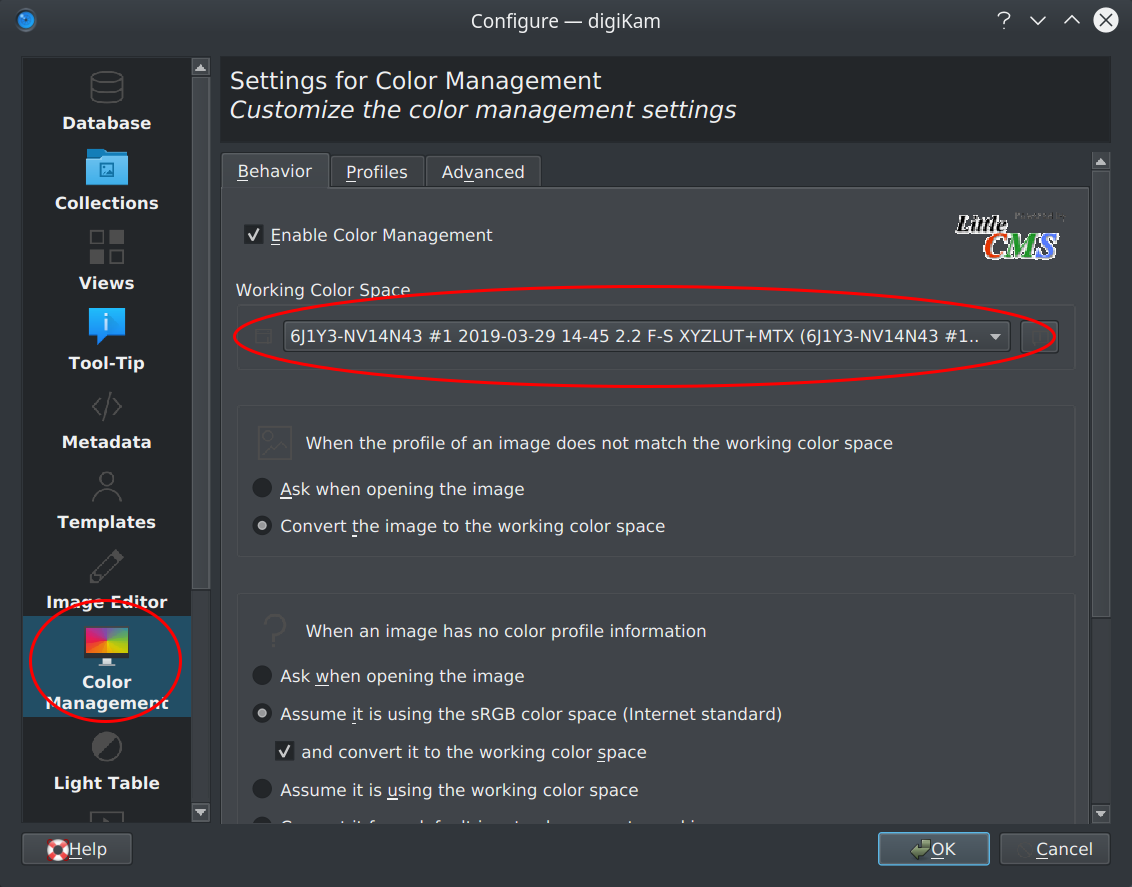

People scans your photo collection for faces.Dates, Timeline, and Map let you view photos by relevant data contained in the photo's EXIF information.There are other forms of labels, such as color labels and flags, all user-assignable from the thumbnail view. Labels filters your photos according to how many stars you've assigned to a photograph.Clicking on any tag (or control-clicking on several tags) in the Tag panel filters the thumbnail view to show photos with that tag assigned. There probably won't be tags at first (unless you've created or imported some), but you can create tags in the Tag Manager interface and assign them to pictures. Tags filters the photos in your collection by arbitrary metadata tags.In addition to the Album view, there are: There are lots of other ways to view your photos, though, and they're all accessible as verticle tabs (a time-honored KDE interface tradition) along the left edge of the main window. When you select a directory (or an album, if you prefer), the photos within are displayed as an array in the right panel.
#Digikam only shows directories or albums plus#
DigiKam refers to whatever directories it finds within your image directory as an Album, and it parses each image file, along with its native metadata plus metadata digiKam allows you to add, into a thumbnail view. The initial default view is a filesytem view, starting from whatever directory you defined as your image folder during digiKam setup. The basics are pretty simple: On the left are panels that control how you view photos, in the middle are the photos themselves, and on the left are effects and filters. The layout of digiKam is fairly intuitive, especially if you're a KDE user. Depending on how many photos you have and how large they are, you might want to let it run over night. The initial launch will be slower than usual because digiKam must analyse the photographs in your collection and record information about each one. Some choices affect performance and file size, so read the screen carefully to decide what you really want, but all of the decisions can be changed later, so accepting the defaults is safe if you're not sure. Upon first launch, you must step through a brief setup wizard. Your distribution may or may not have the latest version, but don't get overly concerned about that digiKam is in the enviable position of having been essentially a complete and stable application for years now, so unless you're looking for a specific feature that only exists in the latest version, it's going to be a good experience, at least just getting started.
#Digikam only shows directories or albums software#
If you don't have digiKam installed, you can either grab it for Linux, Windows, or, with a little bit of work, on OS X from the digiKam download page or, on Linux, from your distribution's software repository. Suffice it to say that digiKam is a humble application, because "digital photo management" barely touches on the feature set. DigiKam bills itself as a digital photo management application.


 0 kommentar(er)
0 kommentar(er)
